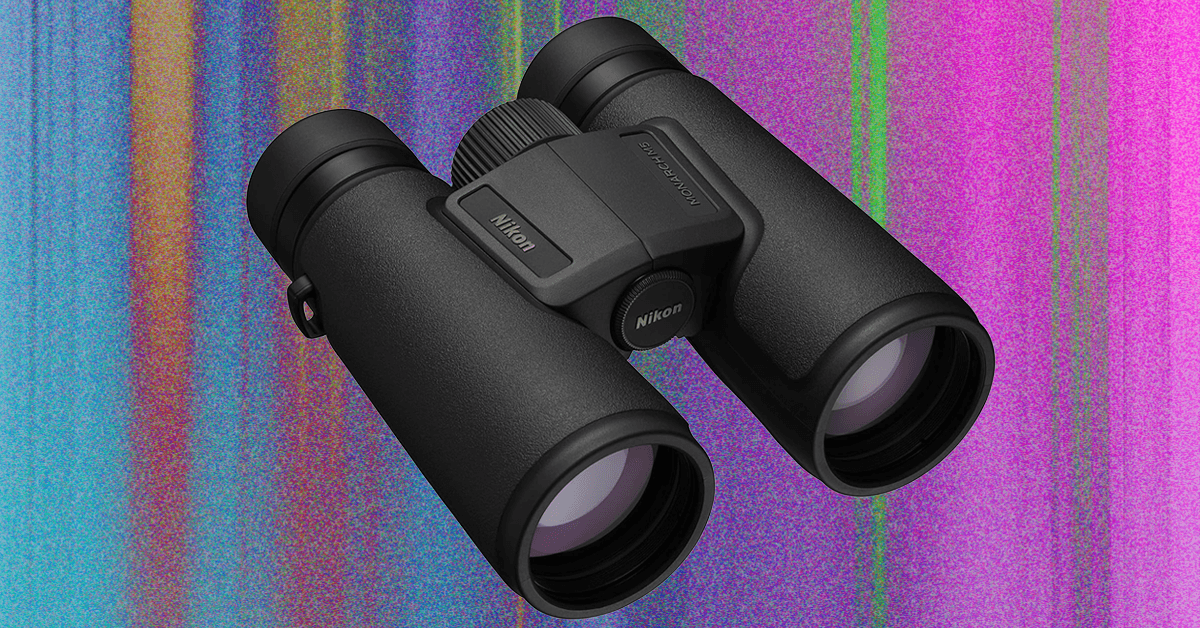Tech
Simple formula could guide the design of faster-charging, longer-lasting batteries

At the heart of all lithium-ion batteries is a simple reaction: Lithium ions dissolved in an electrolyte solution “intercalate” or insert themselves into a solid electrode during battery discharge. When they de-intercalate and return to the electrolyte, the battery charges.
This process happens thousands of times throughout the life of a battery. The amount of power that the battery can generate, and how quickly it can charge, depend on how fast this reaction happens. However, little is known about the exact mechanism of this reaction, or the factors that control its rate.
In a study appearing in Science, MIT researchers have measured lithium intercalation rates in a variety of different battery materials and used that data to develop a new model of how the reaction is controlled. Their model suggests that lithium intercalation is governed by a process known as coupled ion-electron transfer, in which an electron is transferred to the electrode along with a lithium ion.
Insights gleaned from this model could guide the design of more powerful and faster charging lithium-ion batteries, the researchers say.
“What we hope is enabled by this work is to get the reactions to be faster and more controlled, which can speed up charging and discharging,” says Martin Bazant, the Chevron Professor of Chemical Engineering and a professor of mathematics at MIT.
The new model may also help scientists understand why tweaking electrodes and electrolytes in certain ways leads to increased energy, power, and battery life—a process that has mainly been done by trial and error.
“This is one of these papers where now we began to unify the observations of reaction rates that we see with different materials and interfaces, in one theory of coupled electron and ion transfer for intercalation, building up previous work on reaction rates,” says Yang Shao-Horn, the J.R. East Professor of Engineering at MIT and a professor of mechanical engineering, materials science and engineering, and chemistry.
Shao-Horn and Bazant are the senior authors of the paper. The paper’s lead authors are Yirui Zhang Ph.D., who is now an assistant professor at Rice University; Dimitrios Fraggedakis Ph.D., who is now an assistant professor at Princeton University; Tao Gao, a former MIT postdoc who is now an assistant professor at the University of Utah; and MIT graduate student Shakul Pathak.
Modeling lithium flow
For many decades, scientists have hypothesized that the rate of lithium intercalation at a lithium-ion battery electrode is determined by how quickly lithium ions can diffuse from the electrolyte into the electrode. This reaction, they believed, was governed by a model known as the Butler-Volmer equation, originally developed almost a century ago to describe the rate of charge transfer during an electrochemical reaction.
However, when researchers have tried to measure lithium intercalation rates, the measurements they obtained were not always consistent with the rates predicted by the Butler-Volmer equation.
Furthermore, obtaining consistent measurements across labs has been difficult, with different research teams reporting measurements for the same reaction that varied by a factor of up to 1 billion.
In the new study, the MIT team measured lithium intercalation rates using an electrochemical technique that involves applying repeated, short bursts of voltage to an electrode.
They generated these measurements for more than 50 combinations of electrolytes and electrodes, including lithium nickel manganese cobalt oxide, which is commonly used in electric vehicle batteries, and lithium cobalt oxide, which is found in the batteries that power most cell phones, laptops, and other portable electronics.
For these materials, the measured rates are much lower than has previously been reported, and they do not correspond to what would be predicted by the traditional Butler-Volmer model.
The researchers used the data to come up with an alternative theory of how lithium intercalation occurs at the surface of an electrode. This theory is based on the assumption that in order for a lithium ion to enter an electrode, an electron from the electrolyte solution must be transferred to the electrode at the same time.
“The electrochemical step is not lithium insertion, which you might think is the main thing, but it’s actually electron transfer to reduce the solid material that is hosting the lithium,” Bazant says. “Lithium is intercalated at the same time that the electron is transferred, and they facilitate one another.”
This coupled-electron ion transfer (CIET) lowers the energy barrier that must be overcome for the intercalation reaction to occur, making it more likely to happen. The mathematical framework of CIET allowed the researchers to make reaction rate predictions, which were validated by their experiments and substantially different from those made by the Butler-Volmer model.
Faster charging
In this study, the researchers also showed that they could tune intercalation rates by changing the composition of the electrolyte. For example, swapping in different anions can lower the amount of energy needed to transfer the lithium and electron, making the process more efficient.
“Tuning the intercalation kinetics by changing electrolytes offers great opportunities to enhance the reaction rates, alter electrode designs, and therefore enhance the battery power and energy,” Shao-Horn says.
Shao-Horn’s lab and their collaborators have been using automated experiments to make and test thousands of different electrolytes, which are used to develop machine-learning models to predict electrolytes with enhanced functions.
The findings could also help researchers to design batteries that would charge faster, by speeding up the lithium intercalation reaction. Another goal is reducing the side reactions that can cause battery degradation when electrons are picked off the electrode and dissolve into the electrolyte.
“If you want to do that rationally, not just by trial and error, you need some kind of theoretical framework to know what are the important material parameters that you can play with,” Bazant says. “That’s what this paper tries to provide.”
More information:
Yirui Zhang et al, Lithium-ion intercalation by coupled ion-electron transfer, Science (2025). DOI: 10.1126/science.adq2541. www.science.org/doi/10.1126/science.adq2541
This story is republished courtesy of MIT News (web.mit.edu/newsoffice/), a popular site that covers news about MIT research, innovation and teaching.
Citation:
Simple formula could guide the design of faster-charging, longer-lasting batteries (2025, October 2)
retrieved 2 October 2025
from https://techxplore.com/news/2025-10-simple-formula-faster-longer-batteries.html
This document is subject to copyright. Apart from any fair dealing for the purpose of private study or research, no
part may be reproduced without the written permission. The content is provided for information purposes only.
Tech
Lectra appoints John Brearley as president of Americas

Lectra, leader in industrial intelligence technology solutions for players in fashion, automotive, and furniture, announces the appointment of John Brearley as President, Americas, effective October 1, 2025. He becomes a member of the Group’s Executive Committee.
Lectra has appointed John Brearley as president, Americas, effective October 1, 2025.
A 40-year industry veteran and long-time Lectra leader, he will join the executive committee and oversee operations in a region contributing 33 per cent of sales.
Brearley aims to drive growth, strengthen customer ties, and support digital transformation across fashion, automotive, and furniture markets.
Lectra currently operates in 31 countries in the Americas region, with 400 employees in 7 locations – including Tolland, one of the Group’s three production sites – and more than 8,000 customers. The Americas play a crucial role for Lectra, contributing to 33% of the Group’s sales in 2024 and serving a diverse portfolio of customers in the fashion, automotive, and furniture industries, as well as in other industries.
“We look forward to John Brearley continuing his impactful journey within the Group as he steps into this pivotal leadership role”, says Daniel Harari, Chairman and Chief Executive Officer of Lectra. “With his extensive experience in the industry and a proven track record of leading our teams to support our customers and drive growth in Lectra’s recurring business, John is well-positioned to lead our Americas teams toward accelerated growth, strengthened customer relationships, and achieve our strategic objectives.”
Throughout his 40-year career, John has played an instrumental role in shaping a responsive, customer-centric culture within the organizations he has served. He began at Investronica where he managed the business in the UK, before moving to the US in 2001 to lead the North American division. Following Investronica’s acquisition in 2004 by the Lectra group, John took over the responsibility of growing the Consumables and Parts activity. His expertise in customer relations earned him the role of Vice President of Customer Care for Lectra Americas in 2007. In 2020, John was promoted to Senior Vice President of Customer Success for the region.
“It is an honor to take on this new role at such a strategic moment for Lectra and our customers in the Americas”, says John Brearley. “My focus will be on supporting customers and ensuring that we empower them not just to meet the challenges of Industry 4.0, but to thrive—growing more resilient, agile, and sustainable through every step of their digital transformation.”
Note: The headline, insights, and image of this press release may have been refined by the Fibre2Fashion staff; the rest of the content remains unchanged.
Fibre2Fashion News Desk (HU)
Tech
I Keep Cooking Thanksgiving! Here’s the Best Holiday Meal Delivery

Making a full Thanksgiving feast for guests can be daunting, for some perhaps even terrifying. The world, and especially Hallmark movies, is full of holiday disaster stories: burnt turkeys, failed desserts, steamed hams. But I’m not bragging when I say that the first Thanksgiving dinner I prepared for my extended family—a little early, this year—was an unmitigated success.
My aunt couldn’t stop talking about the black pepper in the biscuits and the sage on the carrots. My uncle went in for the turkey and the apple-sausage stuffing. My father didn’t speak at all, unless prompted. He just ate and ate. This was a compliment.
But of course, I had cheated. I had ordered my Thanksgiving in the mail—one of the new breed of Thanksgiving meal kits.
The meal was genuinely home-cooked, of course, prepared mostly from scratch. But the entire seven-platter feast—its ingredients and recipes—had arrived two days before, in a box large enough to house a primal cut of beef. It was Thanksgiving in a box: a $200 “Chef’s Table Thanksgiving” meal kit available from sister meal delivery plans Sunbasket and Gobble.
The spread from Sunbasket was vast and generous. The table contained a nearly 3-pound roast of turkey, mounds of mashed potato, pebbled cranberry compote, roasted carrots dressed in miso-sage butter, brussels sprouts dappled with pecorino romano and pancetta, an endless platter of fennel-apple-sausage-stuffing, Gruyère black-pepper biscuits caked more than an inch tall, a tureen of deep brown turkey gravy, a ginger apple crisp waiting in the wings.
Sunbasket is among a new bounty of meal kit companies that aim to ease the stress of the holidays by doing the planning and the shopping for you—big meal boxes tailor-made for those who still want to make a home-cooked meal but for whom the prospect of planning a vast and complicated feast is prohibitive. In fact, two weeks later I cooked another Thanksgiving meal from Blue Apron, this time for my sister’s family.
Here was my experience with Sunbasket and Blue Apron—and some of the other Thanksgiving meal delivery options to get your whole Thanksgiving meal delivered to your home.
Want meal kits for more everyday occasions? See WIRED’s guides to the best meal delivery services, and the best plant-based meal delivery kits.
The Blue Apron à la Carte Thanksgiving (and Holiday) Meal Kit
Available till December 29. Order by November 19 to ensure delivery by Thanksgiving.
Blue Apron, one of the OG meal kits in the US, has undergone a wholesale transformation this year. One of the biggest changes is that subscriptions are no longer required, and à la carte meal ordering is possible—indeed, it’s now my favorite no-subscription meal kit offering. What this means is that for this Thanksgiving, you can order individual Thanksgiving recipe kits to prep fresh at home, without ever setting foot in a crowded grocery store.
That means roasted grape and goat cheese salad ($12), a big ol’ turkey breast with gravy and cranberry sauce ($50), rosemary herb stuffing ($15), a truly excellent casserole worth of truffle-oiled Southern mac and cheese ($20), almond apple crumb pie ($15), brown butter mashed potatoes ($8), challah rolls with maple ($8) and roasted brussels sprouts with pistachios, ($10). I made all of these recipes for my sister’s family and our parents, a little early this year—and it was a surprisingly delicious feast fit for at least eight people. Probably even 10, if you add an extra order of mashed potatoes.
Tech
The Best Binoculars Will Help You Find the Ivory Billed Woodpecker

You get good magnification, with a waterproof (IPX7 rating) and fogproof design in a lightweight package (11.8 ounces). These also have two things that specifically make them great for kids: rugged construction and a nice, rubberized grip. I can’t tell you how many trees and rocks these have bashed into while around my son’s neck, and they’re still as good as new.
Stargazing Binoculars
When you think stargazing you probably think telescopes, but binoculars can work too, especially larger, higher-magnification models like these Celestron Skymasters. The first thing to know is that these are huge—most of the time you’ll want to use them with a tripod, which is not included in the price (they do include an adapter, which I used to put them on a photo tripod, which worked fine). The Porro prism design (see above), with 15x magnification and 70mm objective lenses, make these nice and bright, perfect for getting good views of the moon. They also work for larger clusters and nebulae. They do work for birding as well, but it’s more like using a spotting scope. They’re nice for digiscoping, though if you’re viewing something reasonably stationary, like water birds.
As with all Celestron binos there’s a nice big, smooth focusing knob, and they also have long eye relief which makes them easy to use with glasses. There is a fair bit of chromatic aberration, especially with bright stars or the moon, but I didn’t find it distracting. In fact, for the price, these provide surprisingly great views.
Image-Stabilizing Binoculars
Image-stabilized binoculars use electronics to smooth out your view, similar to what action cams do to get rid of jittery video. There are quite a few models out there, and we are still testing, but here are a few that have stood out from the pack so far.
Image-stabilized binoculars tend to be expensive, but Canon has quite a few budget models worth considering. They’re simple to use. You just tap the button on top for five minutes of stabilization, or tap again to turn it off sooner. The tech detects your movement and adjusts for it optically, in real-time. The Canon 8×20 IS, its smallest, is doubly pocket-friendly: They’re surprisingly affordable and fit in a large pocket. At 15-ounce plus battery, they won’t weigh you down.
The 8X magnification is good for wildlife and sports, as is the 10X magnification of the only slightly larger Canon 10×20 IS. The 6.6-degree field of view is narrow but wide enough for most situations.
-

 Tech1 week ago
Tech1 week agoFrom waste to asset: Turning ethanol production CO₂ into jet fuel
-

 Tech4 days ago
Tech4 days agoNew carbon capture method uses water and pressure to remove CO₂ from emissions at half current costs
-

 Politics5 days ago
Politics5 days agoBritish-Pakistani honoured for transforming UK halal meat industry
-

 Sports3 days ago
Sports3 days agoTexas A&M officer scolds South Carolina wide receiver after touchdown; department speaks out
-

 Business4 days ago
Business4 days agoThese 9 Common Money Mistakes Are Eating Your Income
-

 Business4 days ago
Business4 days agoWhat’s behind Rachel Reeves’s hokey cokey on income tax rises?
-

 Tech1 week ago
Tech1 week agoSecurity flaws in portable genetic sequencers risk leaking private DNA data
-

 Fashion6 days ago
Fashion6 days agoAdidas & Patrick Mahomes expand NIL programme with Texas Tech athletes

















-SOURCE-Caramel-Quin.jpg)




